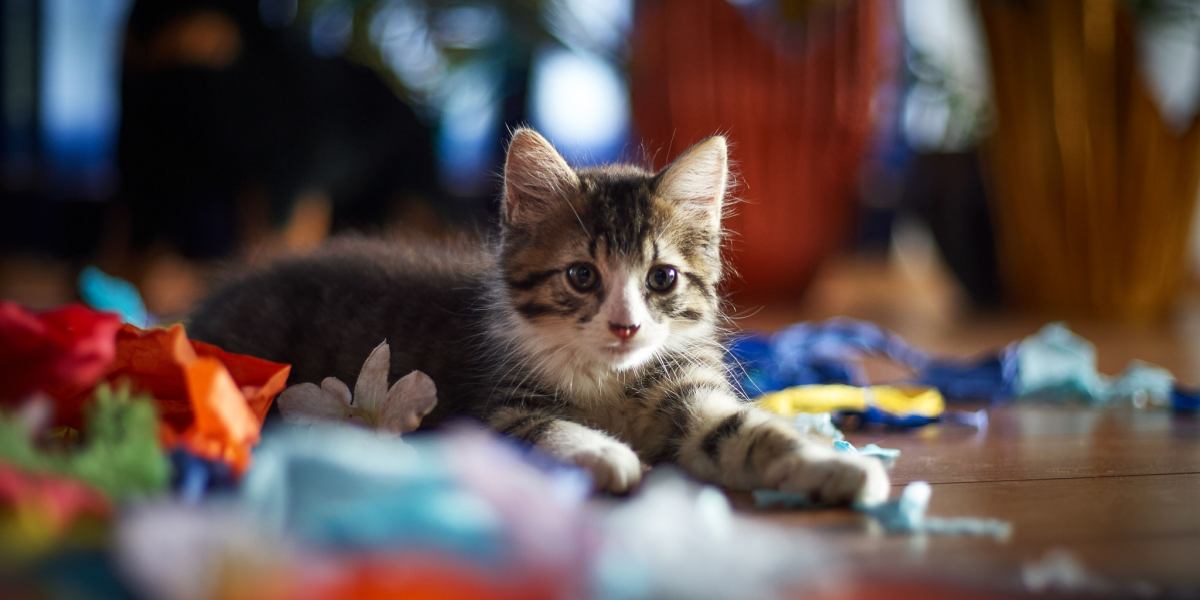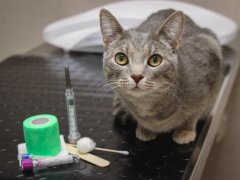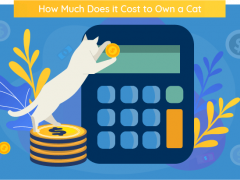
The fascination that cats have with paper and cardboard is a very familiar concept to many cat owners. Perhaps your cat always chooses to lie on the newspaper or magazine that you put down for a moment to get a cup of coffee, or maybe your feline companion is always trying to lie on top of your papers as you try to get some work done.
A fascination with paper and cardboard is common in cats. Many theories try to explain why cats are drawn to paper, but we don't with certainty. Eating paper can be dangerous for cats as the dyes may be harmful and ingesting it could cause an intestinal obstruction.Key Takeaways
Some cats are entertained for hours by simple paper bags! Cats seem to be drawn to paper in many forms, which is not an easily understandable trait. What on earth do they love about it? Here we give some insight into the many theories that abound from cat behavior experts.
1. Insulation
Cats love to be warm, and in fact, are biologically programmed to need more warmth than us. Domestic cats are descended from wild cats living on the African savannahs and Middle Eastern deserts, and a cat’s natural body temperature is higher than a human’s (around 102 degrees Fahrenheit, compared to a human’s normal 97 to 99 degrees).
Our pet cats now live in luxury in our homes, but their core instincts remain strong. Paper is a great insulator, and if you live somewhere with hardwood, concrete, or tile floor, cats may be drawn to even a single piece of paper as a way to conserve body heat (and comfort) as they rest.
Newspaper, with its many layers, is especially good for this. This doesn’t quite explain why cats will sit on a piece of paper on a carpet, however, but perhaps some habits are just there to stay.
Cats love cardboard boxes for similar genealogical reasons: tight spaces signal safety from predators, warmth, and comfort. You’ve probably noticed that your cat likes to curl up in small spaces, and boxes are an excellent example, as they also insulate well, providing that precious warmth.
Some cat behavior experts have hypothesized that cats see pieces of paper as similar to a box, and are therefore drawn to them as a safe place to rest.
2. Curiosity
Cats are inquisitive creatures and love to explore new things: tastes, textures, sounds, and sights. Crinkly paper can be seen as an exciting new toy for your kitty, and may trigger a thorough investigation, using paws, claws, and even teeth to examine every inch. Some cats just genuinely seem to enjoy that crunch of paper as they play with it!
3. Play

Cats are intrigued by the novel rustling sounds of a paper bag.
Play is a hugely important part of a cat’s life, as they use play not only to relieve boredom but also to practice their hunting instincts. Paper might not look much like a cat’s usual prey of birds or small mammals, but its crinkle and crunch can sound a bit like rodents hiding in leaves, and the way it seems to move by itself as it unfolds after scrunching can be very stimulating for cats.
If cats are bored and frustrated, they can get very rough when they play; aggression and destructive behaviors can be a consequence. If your cat is constantly playing with paper but gets overexcited, starts chewing and shredding at it, and becoming destructive, consider adding in some more enrichment at home, such as puzzle feeders and cat toys.
4. Attention-Seeking
Our modern domestic cats are often very bonded to their owners. This is, of course, lovely, but it can lead to some demanding behaviors, with our cats wanting our time and attention constantly. Some cats are more prone to these attention-seeking behaviors than others—following you to the bathroom, making a huge mess if you leave the house, and so on.
Paper is often something that we humans focus intently on: for work, news, drawing, reading, and more. One of the reasons cats might try to sit on paper might be that they are trying to place themselves directly into your vision and focus so that you might give them a treat or a cuddle instead!
This can be particularly obvious if your habits change, for example, you start getting the newspaper delivered early and now read this with your breakfast instead of giving your cat some strokes. Cats are very attuned to these changes, and will make their thoughts well known!
5. New Object Exploration
Cats are territorial and like to keep a very close eye on what comes in and out of their territory. Often, they use a form of odor communication called pheromones to keep track of what is safe and nice, what is new, and what may be a threat.
These chemicals are spread when your cat rubs their scent glands (mostly around the face, cheeks, and paw pads) over an object, and it is their way of marking that object as having been investigated and found to be safe.
This theory is an interesting one, as it is well documented that cats use pheromones and scent communication a lot in their daily lives, but it doesn’t really explain why they often just sit on the paper rather than actively spread their scent on it.
6. Medical

Pica is a condition that causes cats to eat non-food items; it can be a symptom of a nutritional deficiency.
It is not unusual for cats to show a decided preference for paper; it’s usually a completely normal behavior and nothing to worry about. However, if your cat is actively eating lots of paper, it may be worth bearing in mind that there could be an underlying health condition.
Pica, a condition where cats try and eat non-food items, can be a symptom of various nutritional deficiencies. Chewing on different and unusual textures can also be a sign of dental disease. If you are concerned that your cat is more fixated on paper than is perhaps normal, seek advice from your veterinarian.
It is also worth mentioning, on a medical note, that ingesting large amounts of paper can cause intestinal blockages in cats, and the dyes used in the inks can be toxic in large quantities. If your cat is a determined paper-eater, keep paper items out of your cat’s reach.
Also Read: The Complete Guide To Dental Cleaning For Cats
In Summary
Do you have a cat who just loves paper? We’ve looked at multiple reasons why, from warmth to curiosity, play to territorial marking, and attention seeking. There may even be a medical cause for this odd behavior. What do you think motivates your cat? Do they just love the crunch and crinkle of new paper, or is there a deeper reason?
Frequently Asked Questions
Why do cats love paper and boxes?
There are many theories, including that paper and card are both good insulators, and cats love to feel warm and safe when they sleep. They may also just like to explore and play with new textures—or use it to get your attention!
Why do cats eat so much paper?
Cats often like to explore new textures and tastes. They use play as a way of practicing hunting skills, so when they play with paper they can end up chewing and eating it. Too much paper can cause intestinal problems, so encourage your cat to use safe cat toys instead.
Is paper good for cats?
Cats love to play with, explore, and even sleep on paper. This is perfectly normal and safe. However, if your cat likes to eat large amounts of paper, this can become problematic as the bulk of it can cause intestinal obstruction, and the dyes used on the pages can also be harmful.







